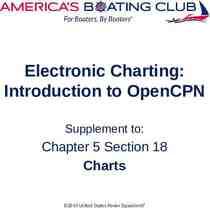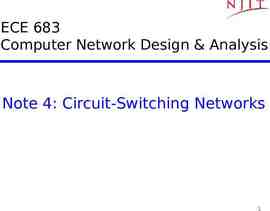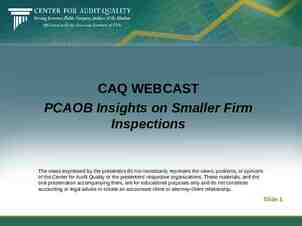Casualty Actuarial Society Improving and Protecting the Balance Sheet
42 Slides159.00 KB
Casualty Actuarial Society Improving and Protecting the Balance Sheet 2002 Spring Meeting San Diego, California
Improving and Protecting the Balance Sheet Moderator: Sean R. Devlin, Vice President American Re-Insurance Company Panelists: Michael J. Belfatti, Senior Vice President and Chief Actuary, ACE Financial Solutions Peter J. Doyle, Vice President, American Re-Insurance Company
Agenda Environment Capital Issues Background of Finite Reinsurance Accounting Issues Case Study: Quota Share Case Study: Adverse Loss Development Cover / Loss Portfolio Transfer Questions
Environment
Environment - Recent History Several Years of Competitive Pricing Under-reserved in recent accident years Asbestos refuses to go away Poor investment returns September 11
Environment – Result of Recent History A large percentage of balance sheets are strained Many companies are in danger of rating downgrades
Environment – Current Situation At long last, the hard market has recently returned But, companies may not be strong enough financially to take advantage of it Are there reinsurance solutions?
Capital Issues
Capital Issues Insurance companies need capital – Buffer against uncertainty – Provides comfort level for prospective counterparties (e.g., lenders, policyholders) – Required to run the operation and build new strategic efforts – Assures regulators and rating agencies that “promise to pay” will be fulfilled. – Avoids “run on bank” mentality.
Capital Issues Various Standards for Capital Need Exist – – – – NAIC RBC AM Best (BCAR/ERM) S&P Economic Modeling
Capital Issues NAIC RBC – – – – Implemented in mid-90s Based on statutory financials Charges to reserves and premium by line Adjusts for company experience relative to industry
Capital Issues AM Best – – – – Design similar to NAIC RBC Separate analysis of reserve inadequacy Based on EPD calibration Adjustment to “undo” effect of LPT
Capital Issues S&P – – – – Traditional reserve and premium charges Also based on EPD approach (AAA) Adjust reserves to adequate level No explicit covariance adjustment
Capital Issues Modeled Capital Need – Firms are developing their own view on capital need Centralized firmwide risk modeling Focus on common risk drivers Require assets to meet designated safety standard – For these models in particular, finite products can reduce variability and capital need
Background of Finite Reinsurance History – Pre 1992– limited risk transfer Restricted payment timing – 1992 and Subsequent FAS 113, SAP 62 require risk transfer More delicate balance between risk transfer and risk finance. – Late 1990s to today Development of new structures Integration of new exposures Market has reached some maturity
Background of Finite Reinsurance Recent Demand – Response to increased traditional prices Covers that spread net lines of multiple years – Response to reserve deterioration LPTs – Need to contain impact of “black hole” exposures Asbestos – Continued interest in blending traditional insurance risk with “uninsurable” exposures Integrated finite covers – Companies with need for surplus to support growth Quota Share
Accounting Issues
Accounting Issues Risk transfer Retroactive transactions Discounting loss reserves Offshore carriers
Risk Transfer – FASB 113 The reinsurer assumes significant insurance risk under the reinsured portions of the underlying insurance contracts. It is REASONABLY possible that the reinsurer may realize a SIGNIFICANT loss from the transaction.
Risk Transfer – Deposit Accounting If transaction does not pass risk transfer test, it is booked under deposit accounting guidelines No initial impact on income statement or reserves No income or surplus recognition until loss payments exceed deposit
FASB 113 – Paragraph 11 Exception if substantially all of the insurance risk relating to the reinsured portions of the underlying insurance contracts has been assumed by the reinsurer.
Retroactive Accounting - Statutory Ceded entries are not posted to underwriting accounts Income statement – “retroactive reinsurance gain” in other income Balance sheet – “special surplus from retroactive reinsurance” segregated from unassigned surplus No adjustments to premium or limit
Retroactive Accounting - GAAP Gains are deferred and amortized over anticipated settlement period GAAP exception when ALDC is in conjunction with purchase – prospective accounting treatment – – – – – Reserve guarantee excess of existing reserves Cost is part of purchase price Benefit to operating company being purchased Purchase accounting, not pooling of interests Inception is simultaneous with sale
Discounting Loss Reserves In USA, no discounting of loss reserves except for WC indemnity payments Pricing of finite covers often contemplates discount in price Rating agencies may “discount” the discount if it is covered elsewhere in their formula
Cession to Offshore Carriers Due to discounting issue, finite covers are often written by offshore carriers Federal excise tax Credit for Schedule F – Trust fund – Letters of credit – Funds withheld
Case Study: Quota Share
Case Study: Quota Share Company is currently rated A minus It is writing close to 3:1 WP-to-PHS If they take advantage of hard market, ratio will be greater than 3:1 and rating will be jeopardized Quota share is a solution
Pre Q/S Written Premium Earned Premium Incurred Loss Expenses 100,000 80,000 52,000 30,000 Profit/Loss (2,000) Loss Ratio Expense Ratio Combined Ratio 65.0% 30.0% 95.0% PHS NPW:PHS 35,000 2.9
Quota Share Terms Covers all lines of business Expected Loss Ratio is 65% 30% quota share 3% margin 1 – 1 sliding scale commission – Maximum commission 42% at 55% LR – Minimum commission 20% at 77% LR
Pre Q/S Written Premium Earned Premium Incurred Loss Expenses 100,000 80,000 52,000 30,000 Q/S 30,000 24,000 15,600 9,600 Post Q/S 70,000 56,000 36,400 20,400 Profit/Loss (2,000) (1,200) (800) Loss Ratio Expense Ratio Combined Ratio 65.0% 30.0% 95.0% 65.0% 32.0% 97.0% 65.0% 29.1% 94.1% PHS NPW:PHS 35,000 36,200 2.9 1.9
Quota Share – Other Features Carve out particular lines of business Loss corridors Loss ratio caps Exclusion or sublimit: property cat, mold, terrorism Investment credit with experience account balance
Benefits of a Finite Quota Share Provides capacity for growth in core lines of business. Improves premium leverage. Creates statutory operating income and PHS. Helps maintain rating / stave off a downgrade. Bottom Line: Helps you manage growth without sacrificing your rating.
Case Study: ALDC / LPT
Case Study: ALDC / LPT Example: – Company writes specialty lines (e.g., professional liability, D&O) – Experiencing adverse development on reserves – Rates on new business have increased greatly – Company hopes to capitalize on favorable conditions.
Case Study: ALDC / LPT Capital Constraints: – Most capital methods penalize reserve inadequacy (reserve deficiency removed from capital even if not booked). – Premium based charges inhibit growth – Methods don’t explicit “credit” for favorable market conditions. – Customers may avoid less creditworthy companies
Case Study: ALDC / LPT Basic Example is straightforward – – – – 100 nominal reserves 60 discounted reserves 10 risk/profit load Ceding company reduces 100 of booked reserves for 70 premium – Ceding company receives aggregate limit of 150, and retains risk excess of 150
Case Study: ALDC / LPT Benefits of ALDC/LPT – – – – – Reduce firm’s overall leverage and business risk Can be cheaper source of financing Can gain some tax/accounting income benefit Can restore confidence that the problem is contained Can obtain longer risk coverage than typically available in capital markets or traditional markets.
Case Study: ALDC / LPT Some complications can arise – Some capital adequacy methods “remove” the effect of the LPT Example: AM Best – Credit reduction in reserve risk factor for variability above carried – Gain is removed from surplus and treated through discounting – Coverage from current carried to expected ultimate (deficiency) is assumed to cost the present value of those reserves. – Statutory accounting books LPTs through other income and other liabilities (no reduction to gross leverage)
Case Study: ALDC / LPT Client Issues: – Balancing economic cost vs. balance sheet impact; relative to other options – Obtaining management, regulatory, and rating agency buy-in – Risk transfer – how much is sought; required; willing to be paid for – Price expectation vs. market
Case Study: ALDC / LPT LPT Analysis Issues: – Traditional Actuarial Analysis of Ultimate – Distribution of outcomes Blending traditional methods w/ stochastic methods – Claims Analysis – Allocation of Equity Long Tail Risks Zero Sum Game? (How to value book equity) – Risk Transfer
Case Study: ALDC / LPT LPT Analysis Issues: – Moral Hazard Information Asymmetry Transactions are inherently “one off” Incentives – the “why” question How to assess “out of sample” outcomes – How to Value “Investment Spread” – Financing benefits of writer
Questions ?















































